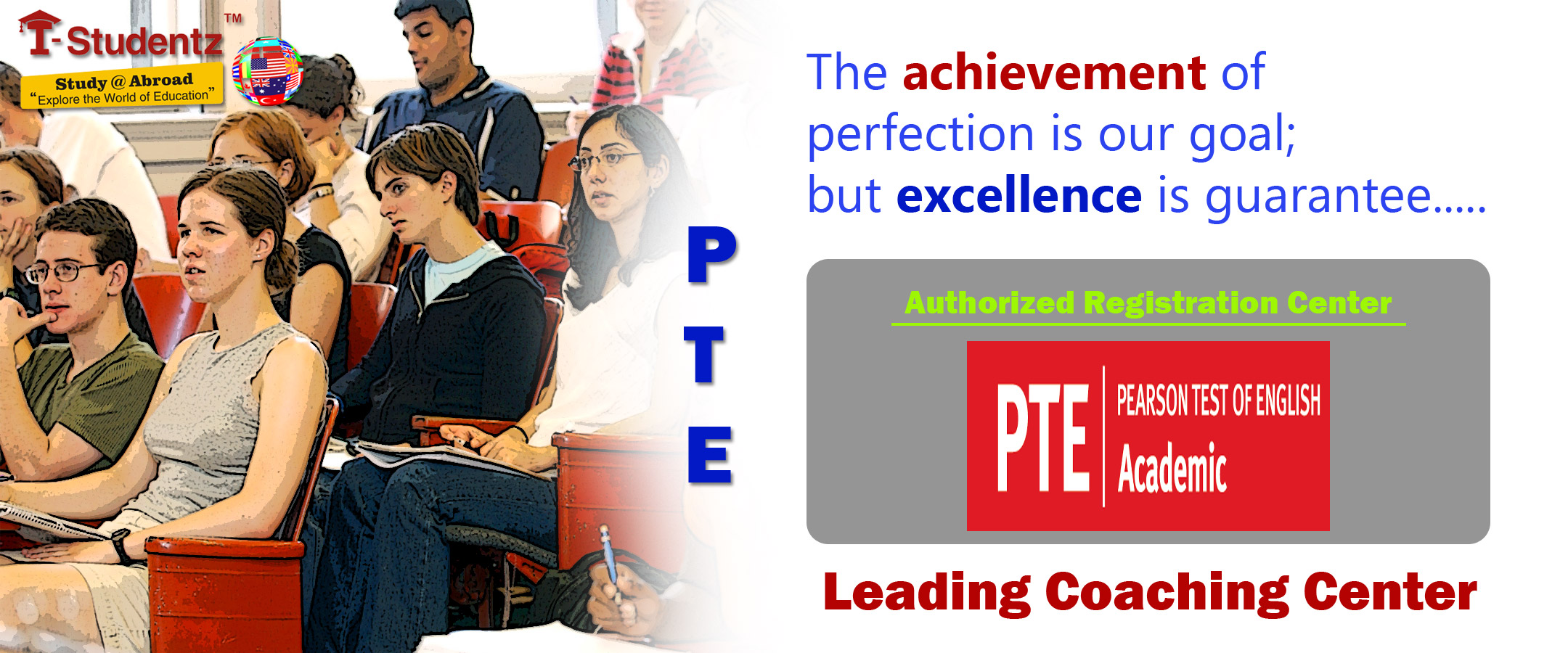Sections in PTE
There are two types PTE such as PTE Academic and PTE General. This test is taken by the candidates who are planning to move abroad with the purpose of higher education, job or PR (Permanent Residence) purpose.
PTE Academic:
PTE academic is a computer based test of English. It is designed to measure the academic English abilities of candidates who wish to demonstrate their level of achievement to professional and government organizations and education organizations. In the PTE Academic exam format, there are four sections such as Reading, Writing, Speaking and Listening. The PTE Academic score is accepted by 6,000 academic institutes across the globe including popular names like Yale, London Business School.
Writing and Speaking is the 1st part where it tests your Writing and Speaking Skills. The time given to this section is 77 – 93 minutes. To assess Speaking, your skill will be tested by your ability to produce spoken English in an academic environment. The Writing section will require you to write responses in academic English using correct grammar and spelling.
Reading is the 2nd part where it tests your Reading skill. The time given to this section is 30 – 40 minutes. This single timed section contains 15-20 independent and integrated skills items, depending on the combination of items in a given test. Different response formats, including multiple-choice, re-order paragraphs, and fill in the blanks, are designed to test your ability to read, write and listen to information provided in English.
Listening is the 3rd part where it will test your Listening Skill. The time given to this section is 45 – 60 minutes. This section consists of questions that are based on audio or video clips which begin to play automatically. You hear each audio or video clip only once so listen carefully. You are allowed to take notes.
PTE General:
PTE General is also one type of PTE test examination. It was formerly known as the London Tests of English. The test is accredited by QCA, the Qualification and Curriculum Authority. It is a theme-based test designed for the speakers of English as a foreign language (EFL). Through this exam, one’s communication skills are recognized and how quickly and easily a candidate remembers the vocabulary and other skills. This test is useful for them, who want to go abroad for job or PR purpose. The PTE General test has primary two sections i.e writing and speaking and again these two sections are divided into some sub-sections. This exam is held thrice in a year in the months of May, June and December.
Writing Test Structure:
Speaking Test Structure:
Listen once to ten short recordings, either monologues or dialogues, and answer a single 3-option multiple choice question or complete a sentence for each.
Listen to one person speaking and write exactly what is heard with correct spellings. The extract is played twice, the second time with pauses, giving time to write down word-forward what is heard.
Listen twice to two recordings, either a monologue or dialogue, and complete text or notes for each using the information heard.
Read five short texts, each containing a gap, and choose which of three answer options is the missing word or phrase.
Read a text and answer five questions or complete five sentences from a choice of three answer options.
Read two texts and answer eight questions about them using single words or short answers.
Read a text and use information from it to fill seven gaps in a second incomplete text or notes.
Write an email or formal or informal letter based on information given in Section 7. One text (70-90 words)
Write a piece of free writing from a choice of two given topics. The form of the response may be:
- factual: blog entry, article, instructions
- critical: review, report, essay
- analytical: essay, analysis of issue or argument, explanation
One text (100-150 words)
Speak uninterrupted in response to a main prompt posed by the interlocutor (up to 1 minute). Follow-up Questions are asked to encourage the test taker to continue talking. Prompts focus on present circumstances, regular and routine activities, past activities and experiences, future plans, tastes and preferences.
Give and support opinions on a topic in response to prompts put by the interlocutor.
Speak without interruption about a picture in response to a prompt posed by the interlocutor (up to 45 seconds). This is followed by a second instruction to interpret some aspect of the picture.
Take part in a role play with the interlocutor using a role card with information and instructions. The situation may require the test taker to negotiate a minor difficulty, such as declining an invitation or making a complaint about some routine matter that can be easily rectified. It could involve collaborating to solve a problem or make an arrangement.












